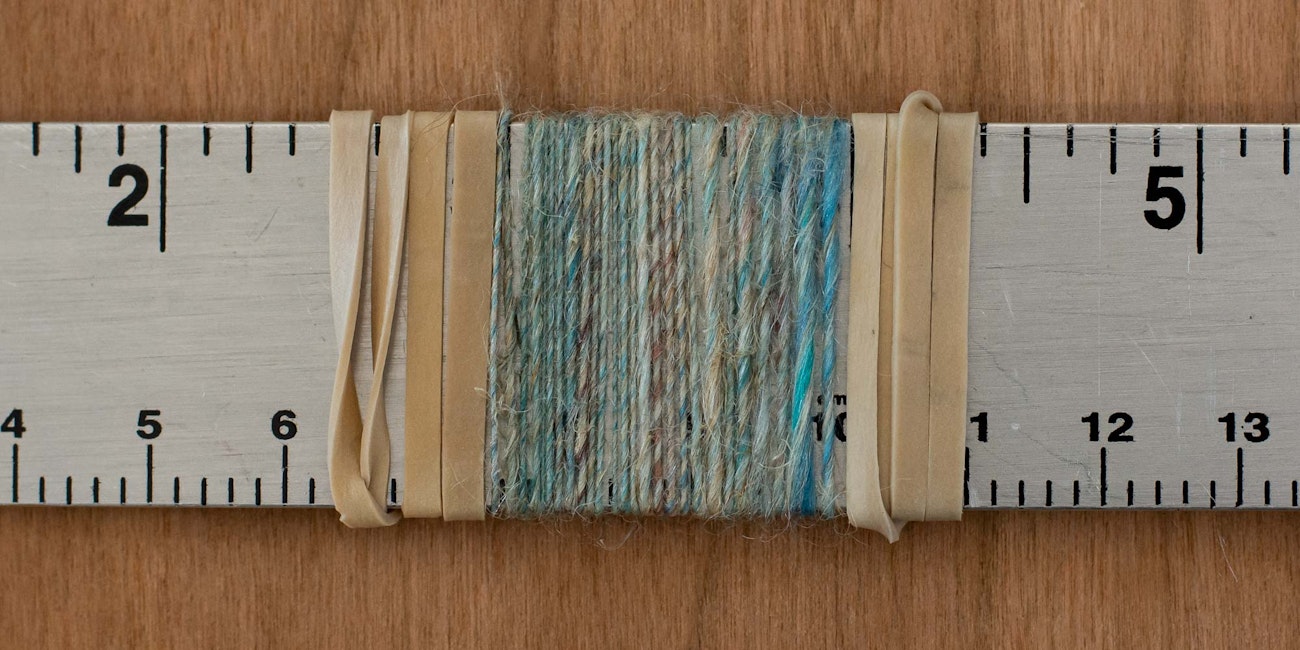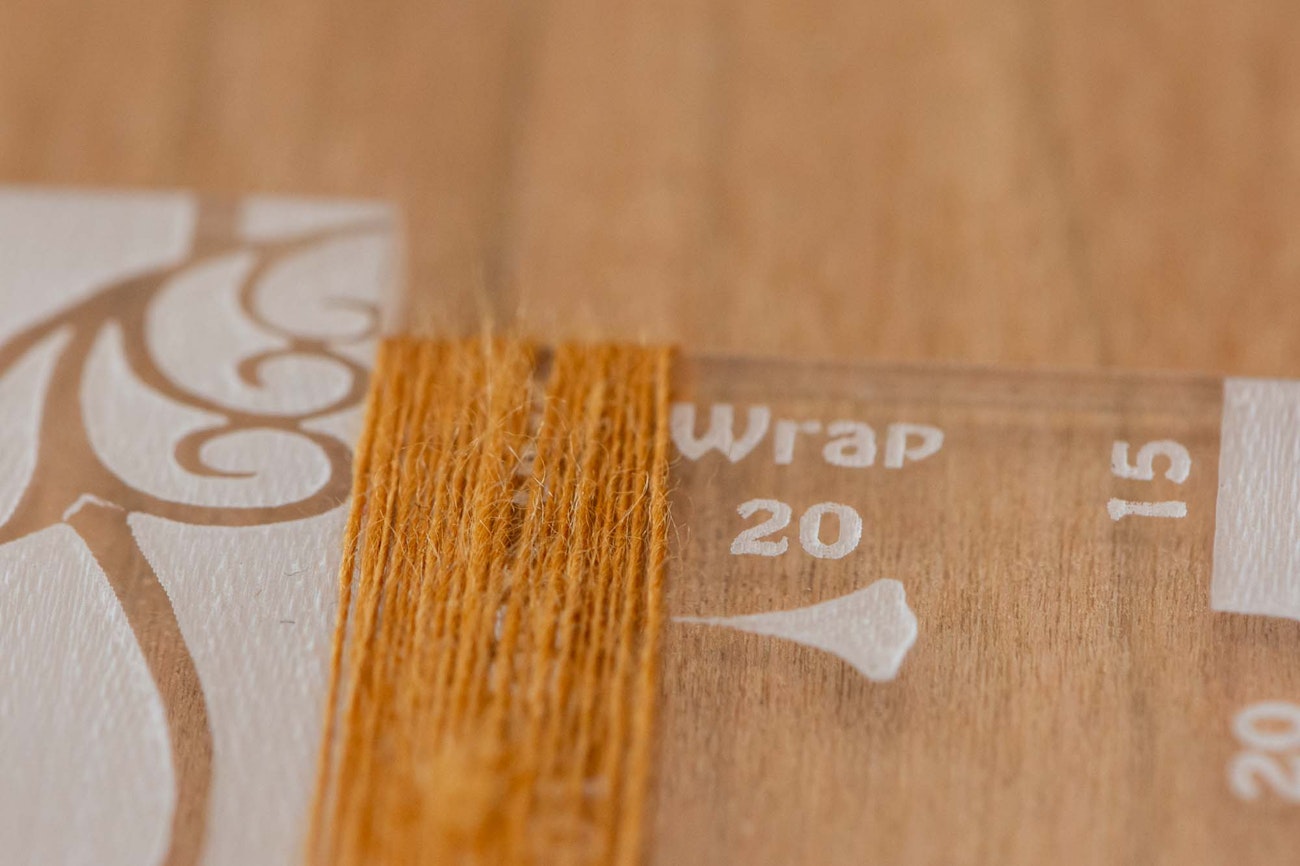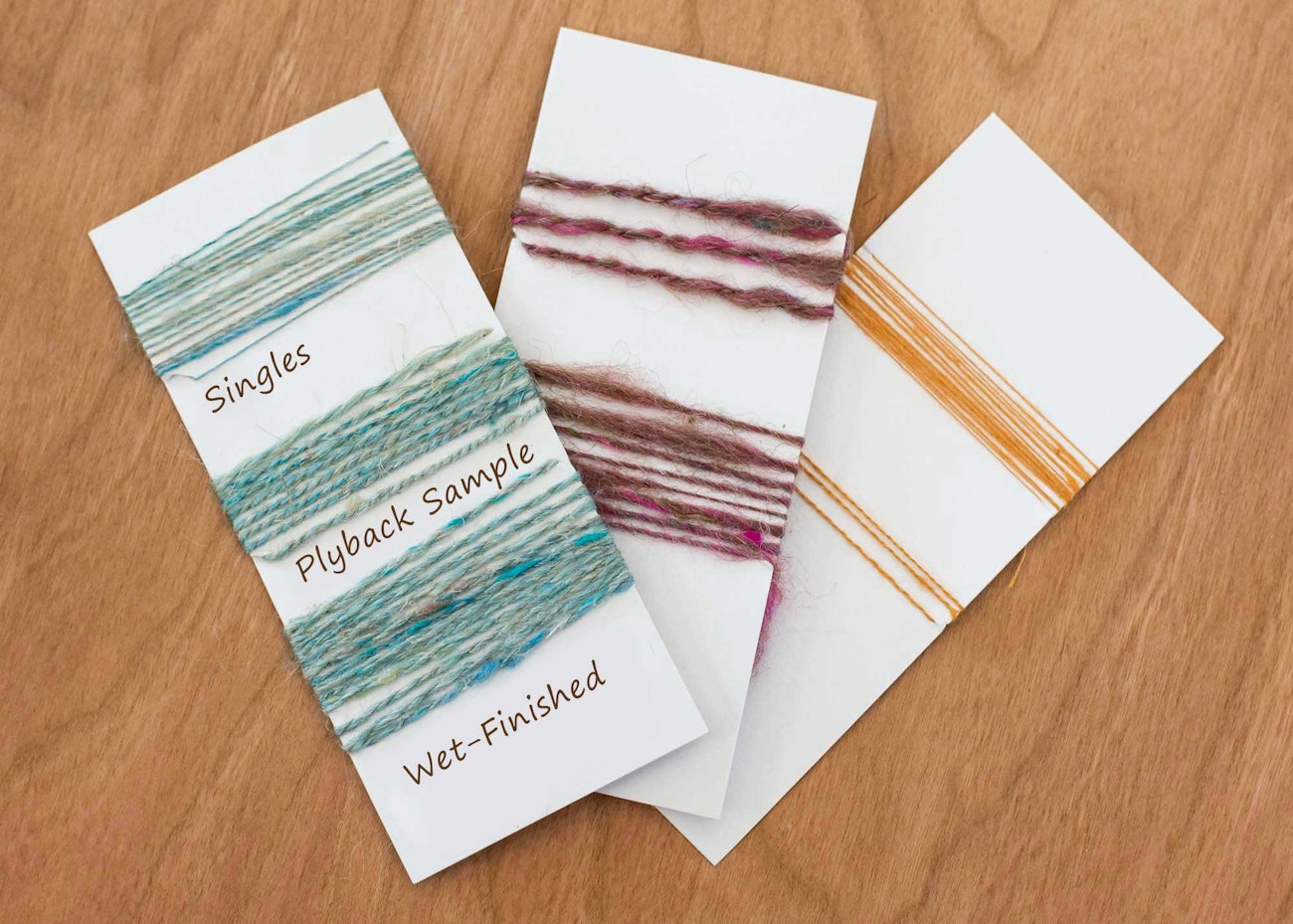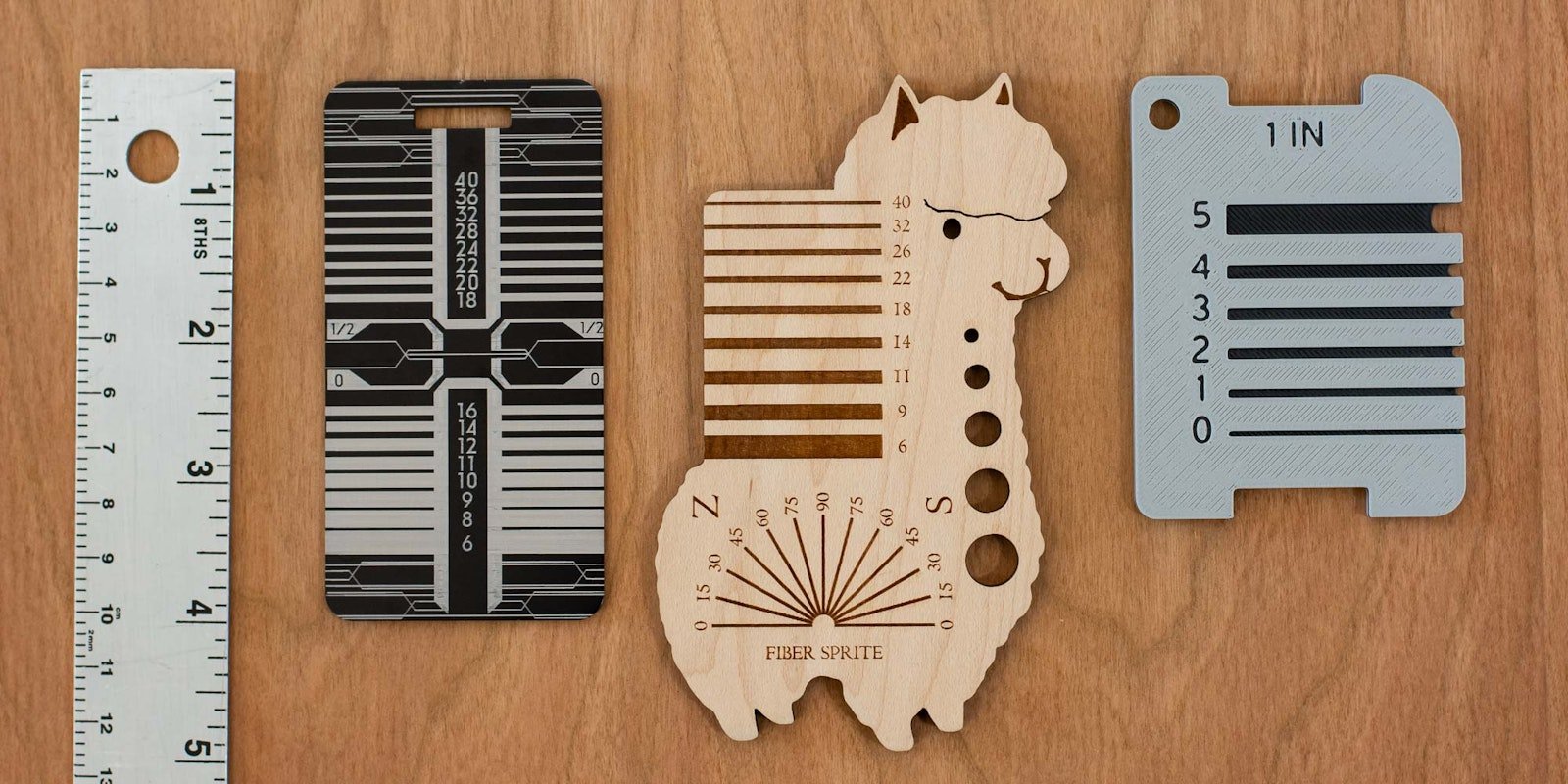Contents
If you want to become a more consistent spinner, you’ve probably heard you need to sample, keep good notes, and use a control card. But how? And does a better control card make you a better spinner? You don’t need to run out and buy the fanciest tools, though.
The best advice I’ve ever received, and what I still say after more than six years of selling my own control card is to be consistent with yourself. Yes, you do need to sample and keep good notes, and a control card that helps you check your wraps per inch (wpi) quickly and easily is part of the package. But it doesn’t have to be fancy—unless you want it to be.
Ways to Check Wraps Per Inch
There are several ways to check wpi, depending on the tools you have available. No matter which method you choose, try not to stretch the yarn or squish it as you take your measurements, as both actions distort your reading. Wraps per inch tools are just one part of the sampling process. Remember that each stage of spinning—from spinning singles, to plying, to wet-finishing—will affect the amount of twist and overall thickness.
Using a Ruler
The simplest way to check wpi is with a ruler. Simply wrap your yarn around the ruler as many times as it takes to cover one inch on the ruler.
To make things easier, wind two rubber bands on the outside of your one-inch sections. Not only will this create bumpers to keep your yarns from sliding around uncontrollably, but it also allows you to tuck your ends under the rubber bands. This prevents your yarn from losing twist—and you from losing patience—as you take your wpi measurement.
 You can easily check wpi measurements with a ruler and two rubber bands.
You can easily check wpi measurements with a ruler and two rubber bands.
Using a Control Card
There is a vast array of wpi tools available, sometimes also called spinner’s control cards. These cards can be made of wood, acrylic, or metal, and include laser-etched markings of wpi in a range of sizes to speed up your measurement process.
Simply align your yarn—without stretching it taut—along these lines until you find the best match. Some spinners prefer to use a clear control card and place the card on top of the yarn, as they feel they are less likely to stretch the yarn this way. Experiment and see what works for you. Remember, the goal is to be consistent with yourself, so it’s best to choose one method and stick with it throughout the course of a project.
Get a closer look! Click on any image below to view it in full-screen mode.
Spinning to Match Standard Yarn Weights
Some control cards list general yarn weights, such as fingering, worsted, and bulky. These are great if you are trying to match a commercial yarn weight and don’t have a lot of other details, but remember you’ll still need to account for your plying structure and finishing method when taking your measurements. See the post Yarn Standards for Spinners for more information about matching handspun yarn to commercial yarn weights.
Get a closer look! Click on any image below to view it in full-screen mode.
Spinning Ultra-Fine Yarns
On the other end of the spectrum are those spinners who like to spin “frog hair,” yarn so fine you can barely see it. This presents a challenge because printers, laser etchers, and the human eye all have limitations when it comes to accuracy with a single tiny measurement. If you find yourself wanting to spin ultra-fine yarn, you might want to invest in a precision control card.
 With the Nano Precise control card from HipStrings, you’ll wrap 10 or 20 times to check your measurement. This also helps to take a more even measurement across a larger length of yarn.
With the Nano Precise control card from HipStrings, you’ll wrap 10 or 20 times to check your measurement. This also helps to take a more even measurement across a larger length of yarn.
Ways to Check Twist Angle
Twist angle is a way to measure how much twist you’ve added to your yarn.
You can use any basic protractor to check twist angle. When the fiber is unspun, it has no twist. Think of this as being parallel to the 0° line. As you add twist, the angle increases. To check the twist angle, keep the yarn parallel to the 0° line on your tool, then line up with the angles on the protractor. This is easiest to do with marled or plied yarns, but with practice you can check twist angle on any yarn.
Get a closer look! Click on any image below to view it in full-screen mode.
Most singles are spun to between 20–35°, although there are useful applications for yarns with more twist (such as crepe yarn) and less twist (like Lopi sweaters). For this reason, some twist angle tools for spinners only include these more common measurements, with more increments in the range spinners are likely to use. With these tools, you’ll lay the fiber parallel to the vertical guides to check the twist angle.
Spin Consistently Throughout Your Project
I’ll admit to a terrible habit—I don’t always keep perfect records of each of my spins. This means that when I stop halfway through a project, I’ll later find myself scratching my head about how I made a yarn, how I planned to ply it, and what I planned to do with it.
There’s an incredibly easy way to fix this, though. Take a piece of cardstock and cut it into little rectangles—I like one inch by four inch strips or shipping tags. Tear a small notch in one side to anchor your yarn, and wrap your singles around a few times. I like to leave a little bit of space so I can lay my freshly spun singles in with the control sample as I spin—it’s a foolproof way to see if I need to spin a little thicker or thinner.
 Small pieces of cardstock or shipping tags can hold your singles and plyback samples for reference throughout your project.
Small pieces of cardstock or shipping tags can hold your singles and plyback samples for reference throughout your project.
Lately, I’ve started keeping this control card with my fiber, so I’ll have it around for the duration of the project, no matter how long it takes. There’s also plenty of room for plyback samples, wet-finished samples, and notes about the project.
Further Reading
Pamela K. Schultz is the content editor for Spin Off. She developed FiberSprite Spinner’s Multitools so she'd never have to search for a wpi tool again, but is just as happy using a piece of cardstock to keep her spinning consistent. She knits, spins, weaves and gardens in coastal North Carolina.









